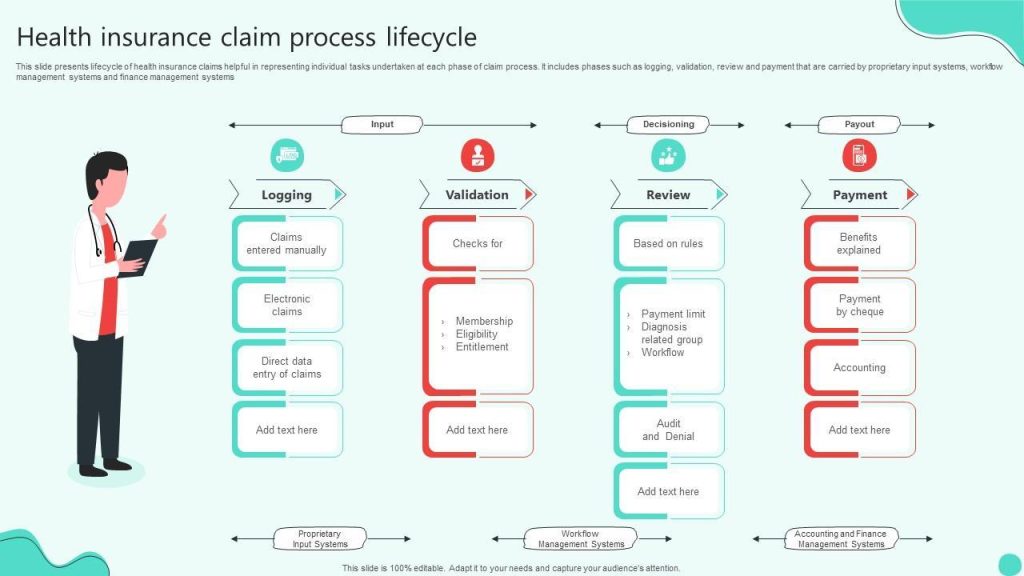Navigating the world of health insurance claims can sometimes feel like trying to decipher a complicated puzzle. But don’t worry—filing a health insurance claim doesn’t have to be stressful or confusing! Whether you’re a first-timer or just need a refresher, this easy step-by-step guide will walk you through the entire process. From understanding what documents you need to submitting your claim smoothly, we’ve got you covered. Let’s dive in and make sure you get the coverage you deserve without the headache!
Table of Contents
- Understanding Your Health Insurance Policy and Coverage
- Gathering Essential Documents for a Smooth Claim Process
- Filling Out the Claim Form with Accuracy and Tips to Avoid Common Mistakes
- Tracking Your Claim Status and Knowing When to Follow Up
- To Wrap It Up
Understanding Your Health Insurance Policy and Coverage
Before diving into the claim process, it’s essential to get familiar with the details of your health insurance policy. Knowing what your plan covers—and just as importantly, what it doesn’t—will save you time and frustration later. Take time to review your policy documents or download digital copies from your insurer’s website. Look out for key components such as deductible amounts, co-payments, out-of-pocket maximums, and any exclusions or limitations specific to certain treatments or medications. This clarity will help you avoid surprises when you submit your claim or receive medical bills.
Keep in mind that insurance policies often have different types of coverage like inpatient, outpatient, maternity, or emergency care. Understanding whether your policy covers these services and whether you need pre-authorization or referrals is crucial. Here’s a quick checklist to help you get organized:
- Verify your coverage limits and remaining benefits.
- Know the network hospitals and providers included in your plan.
- Understand the claim submission deadlines to avoid denial.
- Clarify any documentation required for smooth approval.
Keeping this information at your fingertips will make filing your claim easier and speed up the reimbursement process.
Gathering Essential Documents for a Smooth Claim Process
Before diving into the claim process, having all your paperwork in one place can make the journey smoother than you expect. Start by collecting your health insurance policy documents, including your ID card and policy number, as these contain essential information for claim verification. Alongside this, keep copies of medical reports and prescriptions from your healthcare provider. These documents are crucial as they justify the treatment or medicines claimed under your policy.
Don’t forget to gather itemized bills and receipts that clearly state the services rendered and their costs. These help insurers validate the expenses you’re claiming. Additionally, keeping contact information of your medical provider handy can be helpful if the insurer has any follow-up questions. Organizing these documents in a dedicated folder—either physical or digital—not only speeds up the claim submission but also reduces the chances of missing out on critical paperwork.
- Insurance ID card and policy documents
- Medical reports and prescriptions
- Itemized bills and payment receipts
- Referral letters, if applicable
- Emergency contact details of your healthcare provider
Filling Out the Claim Form with Accuracy and Tips to Avoid Common Mistakes
Accuracy is key when filling out your health insurance claim form—this ensures your claim processes smoothly and swiftly. Before you start, gather all necessary documents such as medical bills, receipts, and your policy number. Double-check each section of the form to confirm that your personal details are correct and up-to-date. Pay special attention to fields like dates, provider information, and treatment codes, as even small errors can lead to claim rejections or delays. Remember to use clear, legible handwriting if filling out a physical form, or carefully review each electronic entry if submitting online.
To avoid common pitfalls, keep these tips in mind: always read the instructions provided with the claim form thoroughly before you begin. If you’re unsure about any section, don’t hesitate to ask your insurance company or healthcare provider for clarification. Avoid leaving blanks; if something doesn’t apply, mark it as ‘N/A’ rather than skipping it. Lastly, retain a copy of the completed form and all supporting documents for your records. This practice will prove invaluable if you need to follow up on your claim later or resolve any discrepancies.
Tracking Your Claim Status and Knowing When to Follow Up
Once your claim is submitted, it’s important to stay in the loop. Most insurance providers offer online portals or mobile apps where you can easily check the status of your claim. Simply log in with your credentials and look for sections like “Claim Status” or “My Claims.” Here, you can see updates such as “Received,” “Under Review,” or “Processed”—helping you understand exactly where your claim stands. Keeping digital or physical copies of your submission documents and any communication can also be a lifesaver when you need to verify details or address discrepancies.
Knowing when to follow up can save you time and prevent unnecessary delays. If your claim hasn’t progressed within 10-14 business days, or if you receive requests for additional information from your insurer, it’s a good time to reach out. Make your follow-up easy and productive by having the following ready:
- Claim reference number or any confirmation code provided after submission.
- Dates and details of your original claim and any communications.
- Copies of relevant documents such as bills, receipts, or medical reports.
By approaching follow-ups with clear information, you not only expedite the process but also demonstrate professionalism, which encourages smoother handling of your claim.
To Wrap It Up
Filing a health insurance claim might seem tricky at first, but with the right steps and a little patience, it becomes a straightforward process. Remember to keep all your documents organized, follow the insurer’s guidelines closely, and don’t hesitate to ask questions if something isn’t clear. Hopefully, this easy step-by-step guide has made the whole process feel a bit less daunting. Here’s to stress-free claims and better health coverage—because taking care of yourself should always come first!





